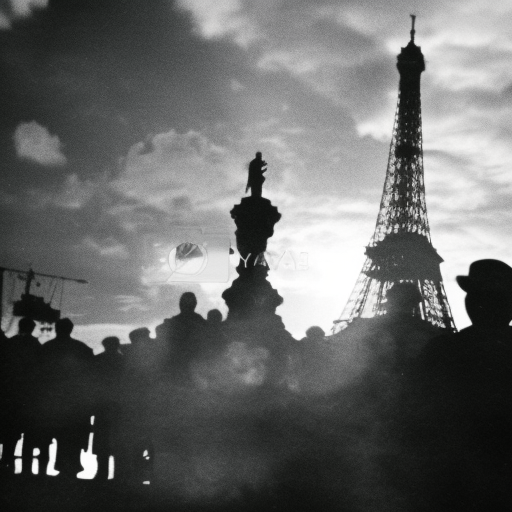Siege of Paris: The Franco-Prussian War and the Fall of the French Capital
The Siege of Paris was a significant event that took place during the Franco-Prussian War from September 1870 to January 1871. It marked a turning point in the conflict and ultimately led to the fall of the French capital.
Background:
The Franco-Prussian War began in July 1870 when France declared war on Prussia. The conflict arose from tensions between the two nations over the vacant Spanish throne, which Prussia’s King Wilhelm I’s relative, Prince Leopold of Hohenzollern-Sigmaringen, had been offered. France feared that a Prussian-aligned Spain would threaten its own security.
The Siege Begins:
After a series of initial Prussian victories, the French army retreated to Paris, where they hoped to regroup and defend the capital. However, the Prussian forces, led by General Helmuth von Moltke, quickly surrounded the city, initiating the siege.
The Prussian Strategy:
The Prussians employed a blockade strategy to isolate and starve the city into submission. They encircled Paris with a ring of fortifications, cutting off all supply routes and communication. The Prussian army also bombarded the city with artillery fire, causing significant damage and casualties.
Conditions in Paris:
Inside the besieged city, conditions rapidly deteriorated. Food shortages became severe, and the population faced starvation. The government attempted to alleviate the crisis by implementing rationing and distributing food supplies, but it was not enough to sustain the city’s inhabitants.
Resistance and Government:
Despite the dire circumstances, the Parisians showed remarkable resilience and determination. They organized a National Guard to defend the city and established a new government, known as the Government of National Defense, led by Léon Gambetta.
Attempts to Break the Siege:
The French made several attempts to break the siege and lift the blockade. One notable effort was the Battle of Buzenval in January 1871, where the French forces launched an attack against the Prussian lines but were ultimately repelled. These attempts proved unsuccessful, and the siege continued.
The Armistice and the Fall of Paris:
As the situation in Paris grew increasingly desperate, negotiations for an armistice began. On January 28, 1871, an armistice was signed, effectively ending the siege. As part of the armistice terms, France agreed to cede the provinces of Alsace and Lorraine to Prussia.
Aftermath:
The fall of Paris and the armistice marked the end of the Franco-Prussian War. It also led to the establishment of the German Empire, with King Wilhelm I of Prussia being proclaimed as Emperor Wilhelm I. The war and the siege had a profound impact on France, leading to political upheaval and the eventual rise of the Third French Republic.
In conclusion, the Siege of Paris during the Franco-Prussian War was a pivotal event that resulted in the fall of the French capital. The Prussian blockade strategy and the dire conditions within the city eventually forced the French to surrender. The armistice that followed marked the end of the war and had far-reaching consequences for both France and Germany.












